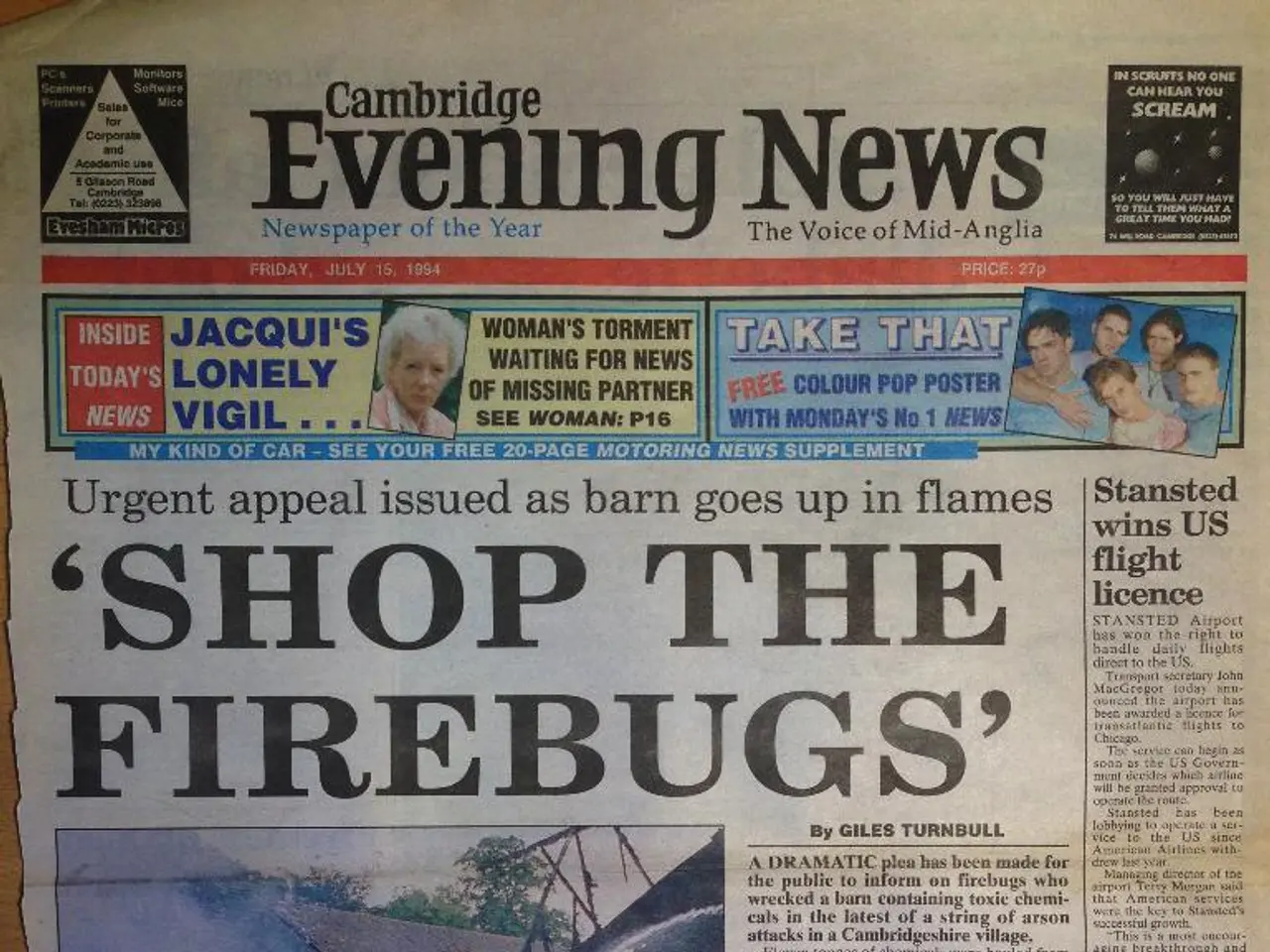Fundraising efforts for public and non-profit radio stations must navigate a delicate balance to secure financial support
In the world of broadcasting, the regulations governing public radio advertising continue to uphold a distinct line separating it from commercial radio. This separation is enforced by the Federal Communications Commission (FCC) and shaped by the unique funding realities of public radio.
Public radio stations, a valuable asset to the country according to Archie Stulc, a former broadcast engineer, are non-commercial entities. They are prohibited from airing traditional commercials and instead rely on underwriting acknowledgments or sponsorship messages that identify donors but cannot contain calls to action, pricing information, or qualitative/promotional language.
The FCC enforces these rules, differentiating non-commercial educational (NCE) radio licensees, which include most public radio stations, from commercial broadcasters. NCE stations must avoid advertising to maintain their licenses and receive reserved spectrum allocations.
Underwriting announcements can state the sponsor’s name, products, services, website, and value-neutral descriptions but must avoid direct advertising pitches or inducements to buy or support. The language remains informational, preserving the non-commercial nature of public broadcasting.
Public radio depends heavily on a mix of listener contributions, sponsorship underwriting, grants (including federal funding, though recent cuts threaten this), and support from the Corporation for Public Broadcasting (CPB). Advertising as known in commercial radio is not allowed, but sponsorship messages are a critical fundraising mechanism.
Recent challenges, such as federal funding cuts through legislation, have placed public radio under financial stress, potentially influencing sponsorship strategies and community engagement. However, these developments have not changed the fundamental advertising restrictions.
Archie Stulc, a vocal advocate for public radio, expresses his disagreement with some actions taken by larger public radio stations but overall considers public radio to be good. He opposes the idea of offering non-profit frequencies to commercial FM broadcasters for a fee, as well as the practice of cutting off federal funding for public media without proper notice or going against the wishes of Congress.
Despite these concerns, donations from individuals to public radio, without ties to programming, are legal and may come with tax benefits. The statement "This program is brought to you by Frank's Ace Hardware" is indeed legal in public radio.
It's worth noting that public media stations are the independent offspring of the early regulation of the broadcast bands, a response to the regulated airwaves being commercial enterprises but still being public airwaves. The author opposes the limitations placed on public radio by the FCC and Congress, specifically the ban on selling ads, arguing that it hinders the potential for local partnerships without violating the ad ban.
In summary, public radio in the U.S. operates under strict non-commercial regulations allowing sponsor acknowledgments but prohibiting commercial-style advertising, enforced by FCC rules and shaped by funding realities involving CPB and other sources. Recent legal and funding developments have not altered this fundamental approach as of mid-2025.
- The unique funding realities of public radio necessitate the reliance on sponsorship messages, known as underwriting acknowledgments, instead of traditional commercials for revenue.
- The language used in underwriting announcements must remain informational and value-neutral to preserve the non-commercial nature of public broadcasting.
- Despite being a non-profit entity, donations from individuals to public radio stations are legal and may come with tax benefits, as indicated by the statement "This program is brought to you by Frank's Ace Hardware".







